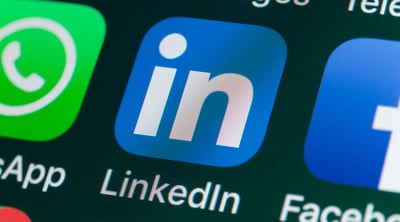March 12, 2020
 by Izabelle Hundrev / March 12, 2020
by Izabelle Hundrev / March 12, 2020
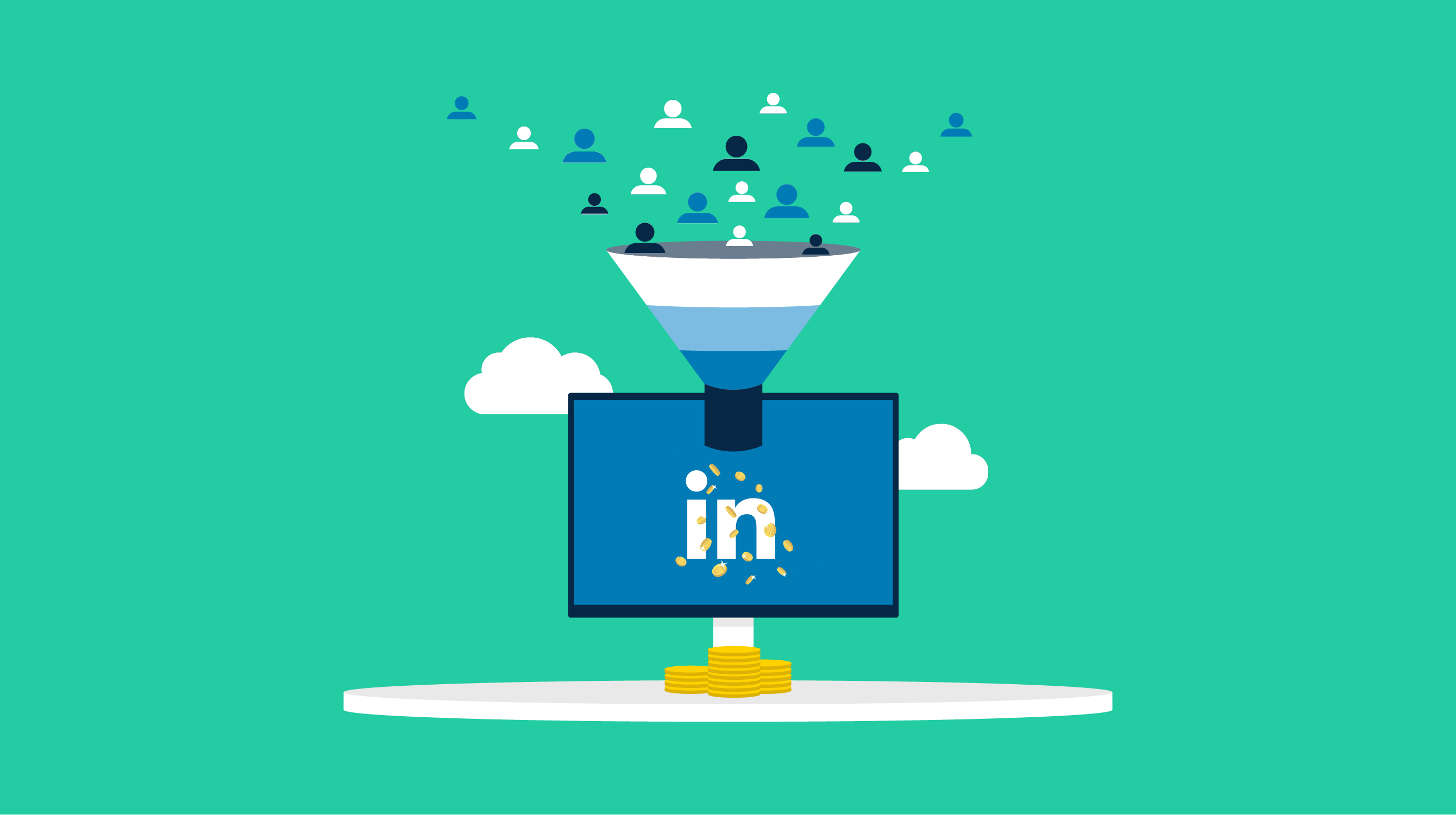
Everything is online nowadays – including our professional lives.
While it may seem like LinkedIn is only for job seekers, the social network has also proven to be a powerful tool for salespeople, especially across the B2B landscape.
Now more than ever, prospects are hit with sales pitches everywhere they turn – meaning it’s going to take a lot more than a traditional cold email to get someone’s attention.
LinkedIn is the world’s most popular social network for business professionals – it’s more likely than not that the majority of your prospects have a profile and use the platform to network. If you’re continuously running into roadblocks with traditional prospecting methods, it might be time to invest more thought into leveraging LinkedIn as a sales resource.
In this article, we lay out the top seven ways LinkedIn can help you break through the noise and prospect successfully.
Much like a traditional social network, LinkedIn allows you to connect and establish relationships with other users. In this case, these users happen to be prospective buyers. While it may seem as simple as sending a friend request, there’s a lot more that goes into turning your connections into actual paying customers.
The trick to leveraging LinkedIn as an effective selling platform is knowing all of its capabilities and how to use them to your advantage. Let’s get started.
One of the first rules of selling is making a good first impression on your prospective customers. On LinkedIn, first impressions are formed based on your profile.
Your profile page should be a direct reflection of your professional brand. As a sales rep, it’s important to highlight your own career achievements as well as provide information about the company you work for and the product or service you sell.
The goal is to come off as approachable, authentic, and credible. The best part is that you don’t have to make any drastic changes to your page, just some small tweaks here and there.
Here are a few best practices to follow when optimizing your profile for selling:
This should be a no-brainer. By adding a professional picture, your profile becomes more personal and it helps people put a face to the name.
This is what prospects will see when you appear in search results and at the very top of your profile page. You want your connections to know who you are and what you do.
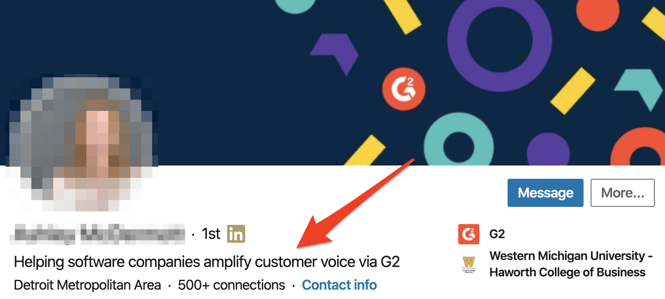 Source: LinkedIn
Source: LinkedIn
Don’t just put your job title in this section. You want to stand out, not blend in. Instead, use a headline that is more creative and descriptive.
For example, if you sell B2B accounting software and target a small business audience, a compelling headline could be, “I help small businesses manage their finances more effectively.” Keep it short and simple.
The most important thing to remember when it comes to your LinkedIn profile summary is to be authentic and genuine. People buy from people that they like and relate to.
You should take this opportunity to show who you are and what you value. Don’t hesitate to be creative and share a personal narrative – if that’s your thing. If you prefer to keep things professional, share a bit about your background and why the solution you sell is meaningful to you.
If you’re comfortable giving out your work email address, this is the spot to do it. Prospects who want to get in touch will appreciate that you’re easy to get a hold of.
A key factor during the sales process is building trust. While it may seem simple, taking the step to include a list of skills and get endorsements from your connections will instantly boost your credibility and make you more trustworthy in the eyes of the people you’re selling to.
RELATED: Don’t have an account yet? Check out our beginner’s guide on how to use LinkedIn to learn how to set up your profile, add experience, and start growing your network.
LinkedIn allows you to “follow” organizations and be notified of company updates and changes. To avoid cluttering your feed, compile a list of only your top target accounts to follow.
You want to stay on top of any big company updates and changes as these are usually good opportunities to reach out to your prospects at those companies.
For example, let’s say one of your top prospects works at a company that just shared a post about receiving a new round of venture capital funding. This is a great excuse to reach out to your contact, congratulate them on the funding, and see if it makes sense to connect.
As previously mentioned, LinkedIn is an incredibly useful platform for establishing your professional brand and building credibility among your colleagues and peers. If you’re new to personal branding, creating original LinkedIn content is a great place to start.
Do research to find topics that your prospective customers care about. Write on those topics and don’t be afraid to share your own personal expertise. If you prefer a more visual medium, videos are an equally effective option.
Once your content is published, remember to promote it as well as engage with other articles or videos that you see being shared among your network.
LinkedIn groups are a great resource for getting more involved in your industry, sharing your expertise, and connecting with potential buyers. When deciding which groups to join, put yourself in the shoes of your prospects: what do they care about?
For instance, if your target audience is HR decision-makers, aim to join groups focused on human resources and talent management. Once you find the right groups to join, be sure to engage in dialogue with others, establish your credibility, and start building relationships.
Although this method will take some time to generate results, your efforts will pay off in the long run once your pipeline is filled with highly-quality leads.
When it comes to using LinkedIn’s direct message feature, InMail, tread with caution. You might be tempted to InMail your prospects directly, but if they’re not responding to your emails and phone calls, it’s unlikely that they will respond now.
With that in mind, it is possible to use InMail for successful prospecting, as long as you’re thoughtful about it.
On LinkedIn, you have a unique opportunity to leverage your professional network in a way that’s more authentic than email. A prospect can go right to your profile and see what mutual connections you have. Use this to your advantage.
When reaching out, don’t hesitate to call out a mutual connection if it makes sense within the context of your message. This can be as simple as saying:
“I was inspired to reach out after I heard that my previous contact, [mutual connection], moved on to their next play. Would be great to connect with you so we can pick up where [mutual connection] and I left off.”
Remember to always structure your sales outreach in a way that puts the prospect at the center of your message. This goes for any form of cold outreach, but especially on LinkedIn InMail.
Use an InMail as an opportunity to provide even more value and stray away from using “I” too many times. The focus of your message needs to be on what you can do to help solve a prospective customer’s problem, not about why they should buy from you.
Nowadays, people’s LinkedIn messages are becoming just as crowded as their email inboxes. If you want to amplify your message and make your InMail stand out, it’s a good idea to personalize your outreach using information from the prospect’s profile. It shows you’ve done your research.
After you’ve put in the time and effort to build relationships with your connections, there may come a time when you want to take conversations off the platform. LinkedIn allows you to export any contact, regardless of whether or not you’re connected to them.
Follow these steps to learn how to export your LinkedIn contacts:
1. At the top of your homepage, click “Me” underneath your profile picture
2. From the drop-down menu, select “Settings & Privacy”
3. Under the privacy tab, click on “How LinkedIn uses your data”
4. Scroll to the option that reads “Getting a copy of your data" and select “Change”
5. Under the “Want something in particular?” option, check the box for “Connections”
6. Click “Request archive”
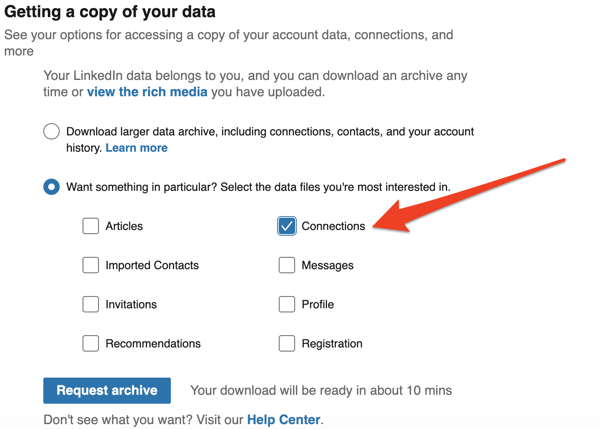 Source: LinkedIn
Source: LinkedIn
From here, you will receive an email with a download link to a ZIP file that will allow you to export your list of LinkedIn connections.
Now that you have a way to access your connections outside of LinkedIn, you’re free to nurture these relationships as you see fit. Just remember to always be tactful in your sales approach.
All of the tips outlined in this article are examples of social selling – a buzzword used to describe the idea of using social media to sell to prospects. To help guide your social selling efforts, LinkedIn launched its Social Selling Index (SSI) feature that assigns a score to every user’s profile.
This score is calculated based on four main metrics:
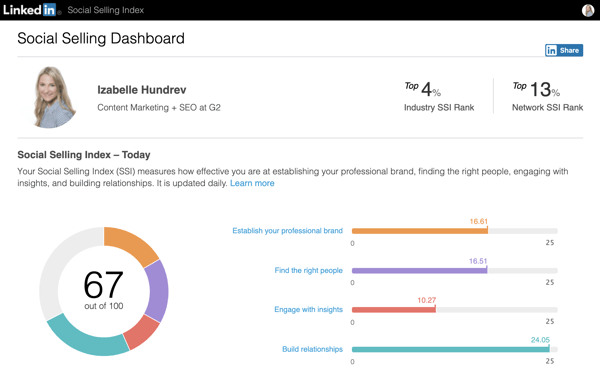 Source: LinkedIn
Source: LinkedIn
Your SSI score is updated daily and shows your progress week over week. The SSI dashboard will also show you how you rank against people in your industry.
B2B is evolving, so the way you sell to prospects needs to, too. LinkedIn may have started primarily as a platform for business and job seekers, but it’s proven to be a powerful resource for many different types of use cases – including for salespeople.
With these tips in mind, you’re ready to leverage LinkedIn to its fullest potential.
LinkedIn can help fuel your prospecting efforts but how do you actually convert connections to customers? Discover how to get more leads through LinkedIn to win buyers over and close more business.
Izabelle is a Partner Marketing Specialist at InStride and a former content specialist at G2. Outside of work, she is passionate about all things pop culture, food, and travel. (she/her/hers)
Is acquiring new customers important to your business?
 by Izabelle Hundrev
by Izabelle Hundrev
Are you utilizing your LinkedIn social selling strategy to the best of your ability?
 by Lauren Pope
by Lauren Pope
LinkedIn’s primary purpose is to connect business professionals all across the world.
 by Alexa Drake
by Alexa Drake
Is acquiring new customers important to your business?
 by Izabelle Hundrev
by Izabelle Hundrev
Are you utilizing your LinkedIn social selling strategy to the best of your ability?
 by Lauren Pope
by Lauren Pope


